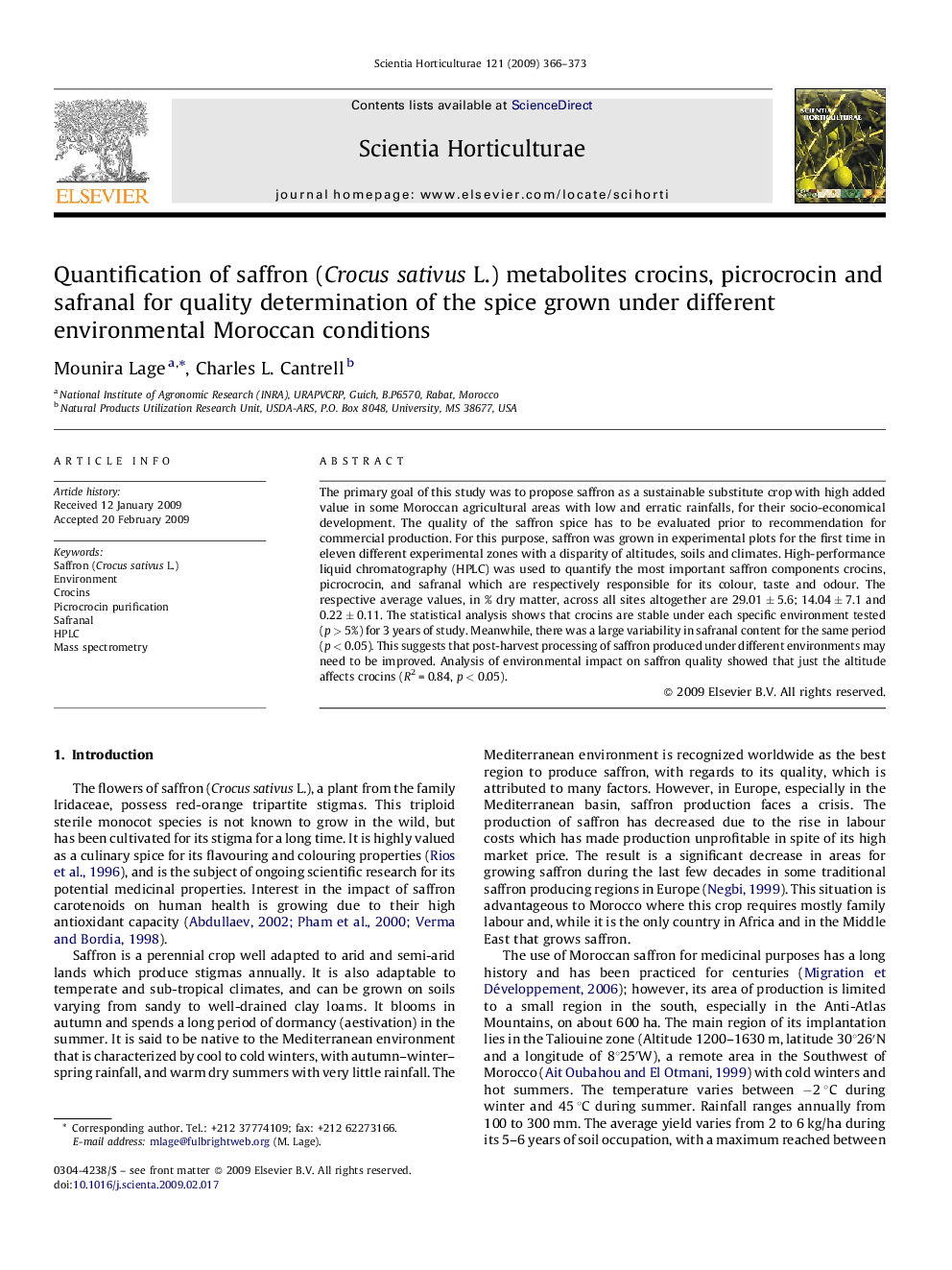| Article ID | Journal | Published Year | Pages | File Type |
|---|---|---|---|---|
| 4569117 | Scientia Horticulturae | 2009 | 8 Pages |
The primary goal of this study was to propose saffron as a sustainable substitute crop with high added value in some Moroccan agricultural areas with low and erratic rainfalls, for their socio-economical development. The quality of the saffron spice has to be evaluated prior to recommendation for commercial production. For this purpose, saffron was grown in experimental plots for the first time in eleven different experimental zones with a disparity of altitudes, soils and climates. High-performance liquid chromatography (HPLC) was used to quantify the most important saffron components crocins, picrocrocin, and safranal which are respectively responsible for its colour, taste and odour. The respective average values, in % dry matter, across all sites altogether are 29.01 ± 5.6; 14.04 ± 7.1 and 0.22 ± 0.11. The statistical analysis shows that crocins are stable under each specific environment tested (p > 5%) for 3 years of study. Meanwhile, there was a large variability in safranal content for the same period (p < 0.05). This suggests that post-harvest processing of saffron produced under different environments may need to be improved. Analysis of environmental impact on saffron quality showed that just the altitude affects crocins (R2 = 0.84, p < 0.05).
